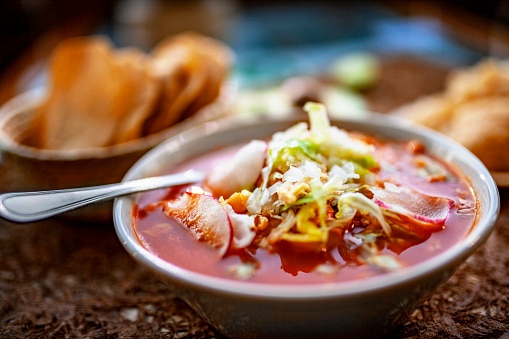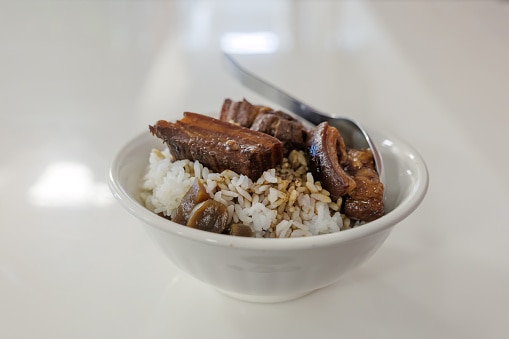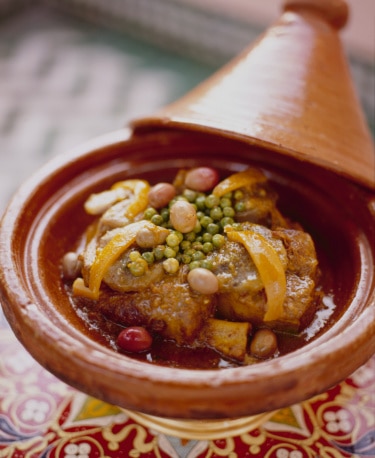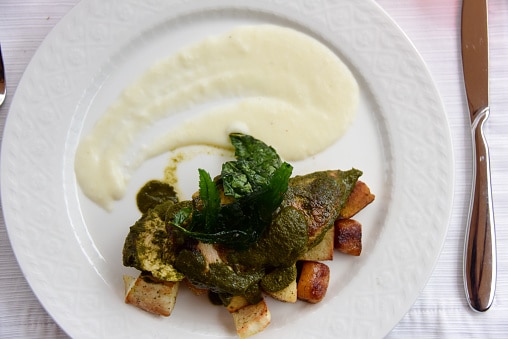Ancient Stews From Around The World
In ancient times, stews were a practical way to cook and preserve meats, vegetables, and grains, making them an essential part of daily life.

New Delhi: Stews have a rich history that dates back thousands of years, and they have been a staple in the diets of various civilizations around the world. In ancient times, stews were a practical way to cook and preserve meats, vegetables, and grains, making them an essential part of daily life.
In Mesopotamia, stews were a significant aspect of the Akkadian and Sumerian civilizations, where they cooked meats with barley and other vegetables. The ancient Egyptians created their version of stews, using ingredients like fish, onions, and garlic, often flavored with herbs and spices.
In ancient Greece and Rome, stews known as “casseroles” became popular, showcasing a blend of meats, grains, and vegetables. The Romans introduced Garum, a fish stew made with fermented fish sauce, wine, and spices.
In the Aztec civilization, Pozole, a stew made with hominy corn and meat, held cultural and religious significance.
Stews evolved further during the Middle Ages in Europe, with the addition of exotic spices from the East through trade routes.
Stews have continued to evolve with globalization, with each culture adapting and adding its own unique ingredients and cooking techniques. Today, stews remain a beloved comfort food worldwide, a symbol of heritage and culinary ingenuity, reflecting the diverse and interconnected civilizations of our past.
Here are 8 ancient stews from different parts of the world, along with their concise recipes:
1. Roman Garum:
Roman Garum is a fish stew made with fermented fish sauce, wine, olive oil, and various herbs and spices. It originated in ancient Greece and was introduced to the Romans during the Hellenistic period.
Recipe:
Ingredients:
- Fresh fish (such as mackerel, anchovies, or sardines)
- Coarse sea salt
- Water
Method:
- Clean and gut the fish, cutting them into small pieces.
- Layer the fish and coarse sea salt in a large container.
- Let it ferment in a warm place for several weeks.
- Strain the liquid from the solid remains to create the Garum sauce.
2. Aztec Pozole:
Aztec Pozole, also known as Mexican Pozole, is a traditional stew from the pre-Columbian Aztec civilization of Mexico.
Ingredients:
- Dried hominy corn
- Pork shoulder or chicken thighs, diced
- Onion
- Garlic
- Dried chili peppers (guajillo or ancho)
- Dried oregano
- Ground cumin
- Salt and pepper to taste
- Garnishes: shredded lettuce, chopped radishes, sliced avocado, cilantro, lime wedges, and crushed tortilla chips
Method:
- Soak the dried hominy corn, then simmer it until tender.
- In a separate pot, simmer the diced pork or chicken with onions, garlic, dried chili peppers, oregano, cumin, salt, and pepper.
- Combine the cooked hominy and meat in one pot and simmer together.
- Serve with garnishes.

3. Chinese Lu Rou Fan:
Chinese Lu Rou Fan, or Braised Pork Rice, is a popular Taiwanese dish with a rich history.
Ingredients:
- Pork belly, sliced into small pieces
- Soy sauce
- Dark soy sauce
- Shaoxing rice wine (or dry sherry)
- Brown sugar
- Garlic
- Ginger
- Star anise
- Vegetable oil
- Water or chicken broth
- Steamed white rice
- Garnishes: chopped scallions and sliced boiled eggs (optional)
Ingredients:
- Marinate the pork belly in soy sauce, dark soy sauce, rice wine, and brown sugar.
- Stir-fry garlic, ginger, and star anise in vegetable oil.
- Add the marinated pork and simmer with water or broth.
- Serve over steamed white rice and garnish with scallions and boiled eggs.

4. Moroccan Tagine:
Moroccan Tagine is a traditional North African stew named after the conical clay pot used for cooking.
Ingredients:
- Lamb shoulder or chicken thighs, cut into pieces
- Onion
- Garlic
- Ground ginger
- Ground cumin
- Ground coriander
- Paprika
- Ground cinnamon
- Saffron threads (optional)
- Chopped tomatoes
- Chicken or vegetable broth
- Green olives
- Dried apricots or raisins
- Honey
- Salt and pepper to taste
- Fresh cilantro or parsley for garnish
- Cooked couscous or bread to serve
Method:
- Sauté onions and garlic in a pot, then add the meat and spices.
- Pour in tomatoes and broth, then add olives, apricots, and honey.
- Cook until meat is tender.
- Garnish with cilantro or parsley before serving with couscous or bread.

5. Indian Haleem:
Indian Haleem is a rich and flavorful stew enjoyed during Ramadan in Hyderabad, India.
Ingredients:
- Broken wheat (daliya)
- Whole lentils (chana dal)
- Whole black gram (sabut urad dal)
- Red lentils (masoor dal)
- Rice
- Boneless mutton or chicken, cut into pieces
- Onions
- Ginger-garlic paste
- Red chili powder
- Turmeric powder
- Garam masala
- Ghee or vegetable oil
- Lemon juice
- Fresh mint and coriander leaves for garnish
- Fried onions, sliced ginger, and ghee-fried cashew nuts for garnish (optional)
Method:
- Soak broken wheat, lentils, and rice.
- Cook the mixture with mutton or chicken.
- Separately, sauté onions, ginger-garlic paste, and spices.
- Blend cooked meat and lentils into a smooth paste.
- Combine meat and lentil mixture and continue to cook.
- Stir in lemon juice and serve with garnishes.
6. Peruvian Pachamanca:
Peruvian Pachamanca is a traditional Andean stew cooked in the ground.
Ingredients:
- Beef, pork, chicken, or lamb
- Potatoes
- Sweet potatoes
- Corn on the cob
- Yucca root
- Fava beans or green beans (optional)
- Fresh or dried herbs like mint, oregano, or huacatay
- Large lettuce or banana leaves
- Salt and pepper to taste
Method:
- Layer meat, vegetables, and herbs on leaves in a shallow pit.
- Cover with more leaves, and add hot embers and stones on top for even heat distribution.
- Cover the entire pit with soil and let the Pachamanca cook for about 1 to 1.5 hours, depending on the pit's size and heat.
- Uncover the pit and carefully remove the cooked ingredients.
- Serve the Pachamanca with a side of spicy sauce, such as aji amarillo or huacatay sauce, for added zest.

7. Viking Lamb Stew:
Viking Lamb Stew, also known as "Lamb Stew with Root Vegetables," is inspired by the culinary traditions of the Vikings, skilled farmers, hunters, and fishermen.
Ingredients:
- Lamb shoulder, cut into chunks
- Vegetable oil or rendered animal fat (such as pork fat)
- Onion
- Garlic
- Carrots
- Parsnips
- Turnips or rutabagas
- Leek
- Beef or lamb broth
- Red wine (optional)
- Fresh thyme
- Bay leaves
- Salt and pepper to taste
- Chopped fresh parsley for garnish
Ingredients:
- Sear the lamb chunks in vegetable oil or animal fat.
- Sauté onions and garlic, then return the lamb to the pot with vegetables and broth.
- Add red wine, thyme, bay leaves, salt, and pepper.
- Simmer until the lamb is tender.
- Garnish with chopped parsley before serving.
8. Mesopotamian Akkadian Stew:
The Mesopotamian Akkadian Stew is inspired by the culinary practices of ancient civilizations from Mesopotamia, one of the earliest known civilizations.
Ingredients:
- Lamb or beef, cut into chunks
- Vegetable oil
- Onion
- Garlic
- Carrots
- Parsnips
- Turnips
- Barley
- Beef or lamb broth
- Ground cumin
- Ground coriander
- Ground turmeric
- Ground cinnamon
- Salt and pepper to taste
- Chopped fresh parsley or cilantro for garnish
Method:
- Sear the lamb or beef in vegetable oil.
- Sauté onions and garlic, then add vegetables and barley.
- Pour in broth and season with cumin, coriander, turmeric, cinnamon, salt, and pepper.
- Simmer until meat and vegetables are tender.
- Garnish with chopped parsley or cilantro before serving.
These ancient stews offer a glimpse into the culinary heritage of various cultures, showcasing unique flavours and techniques passed down through generations. Preparing and enjoying these dishes can be a delightful way to connect with history and embrace the richness of ancient culinary traditions from different parts of the world.






































